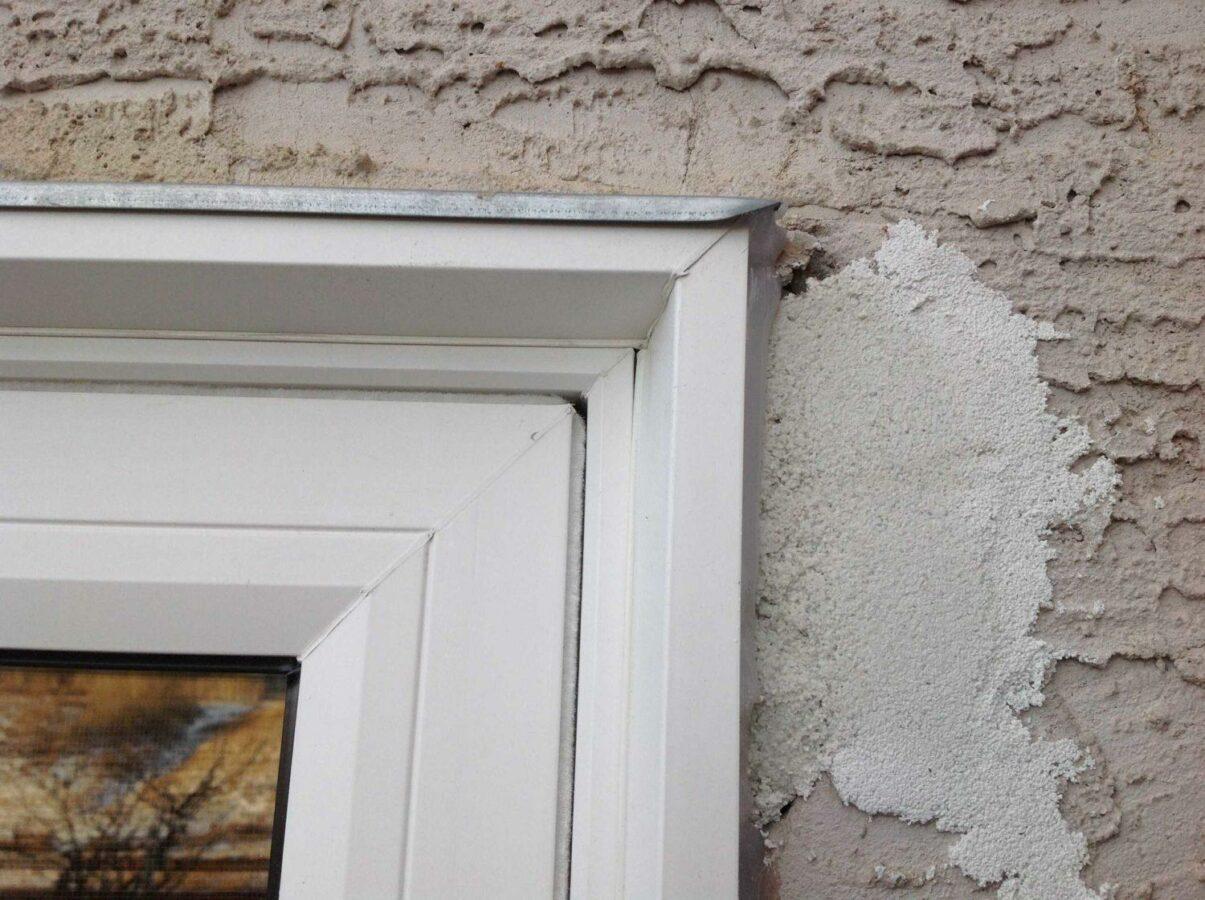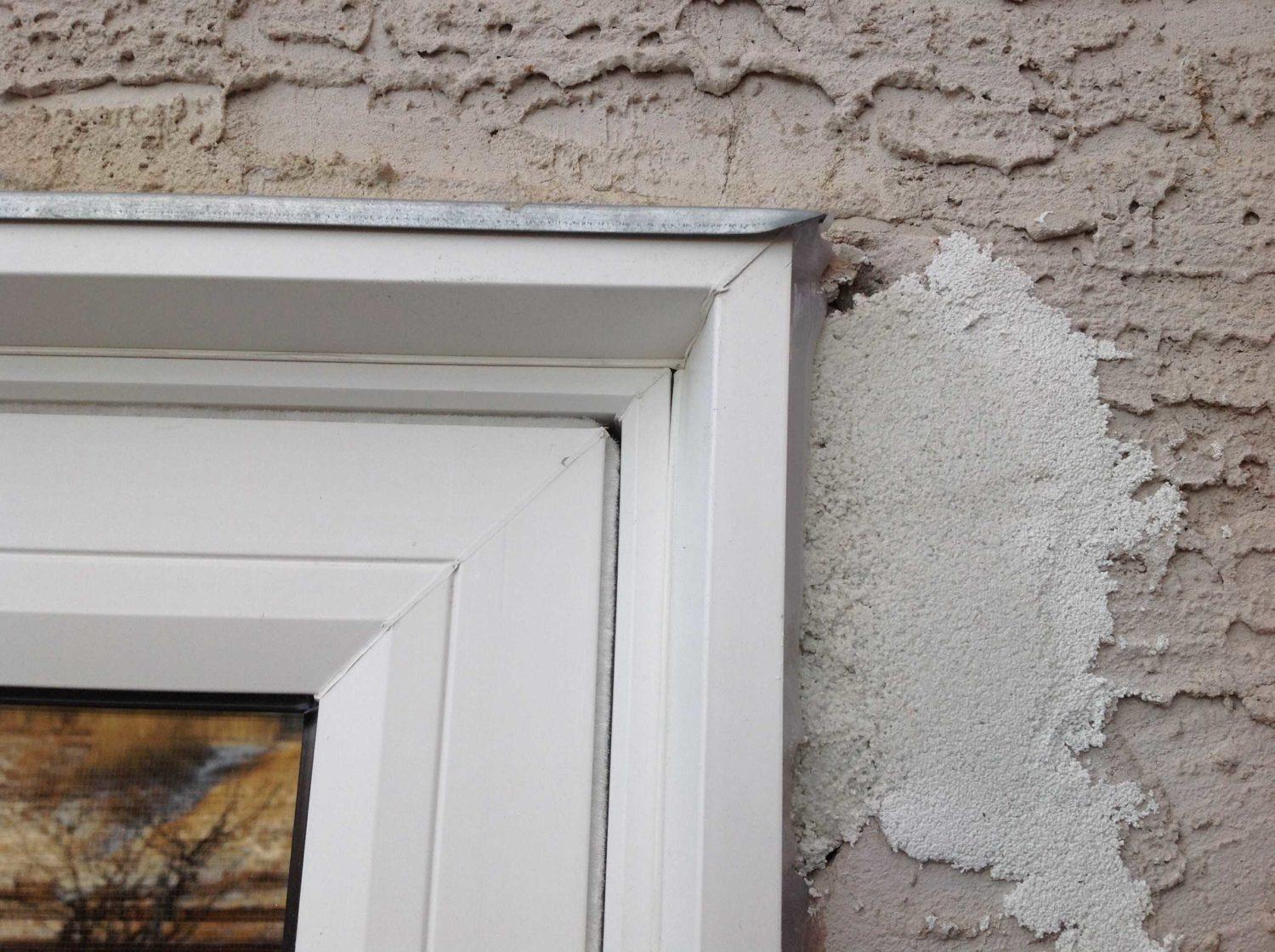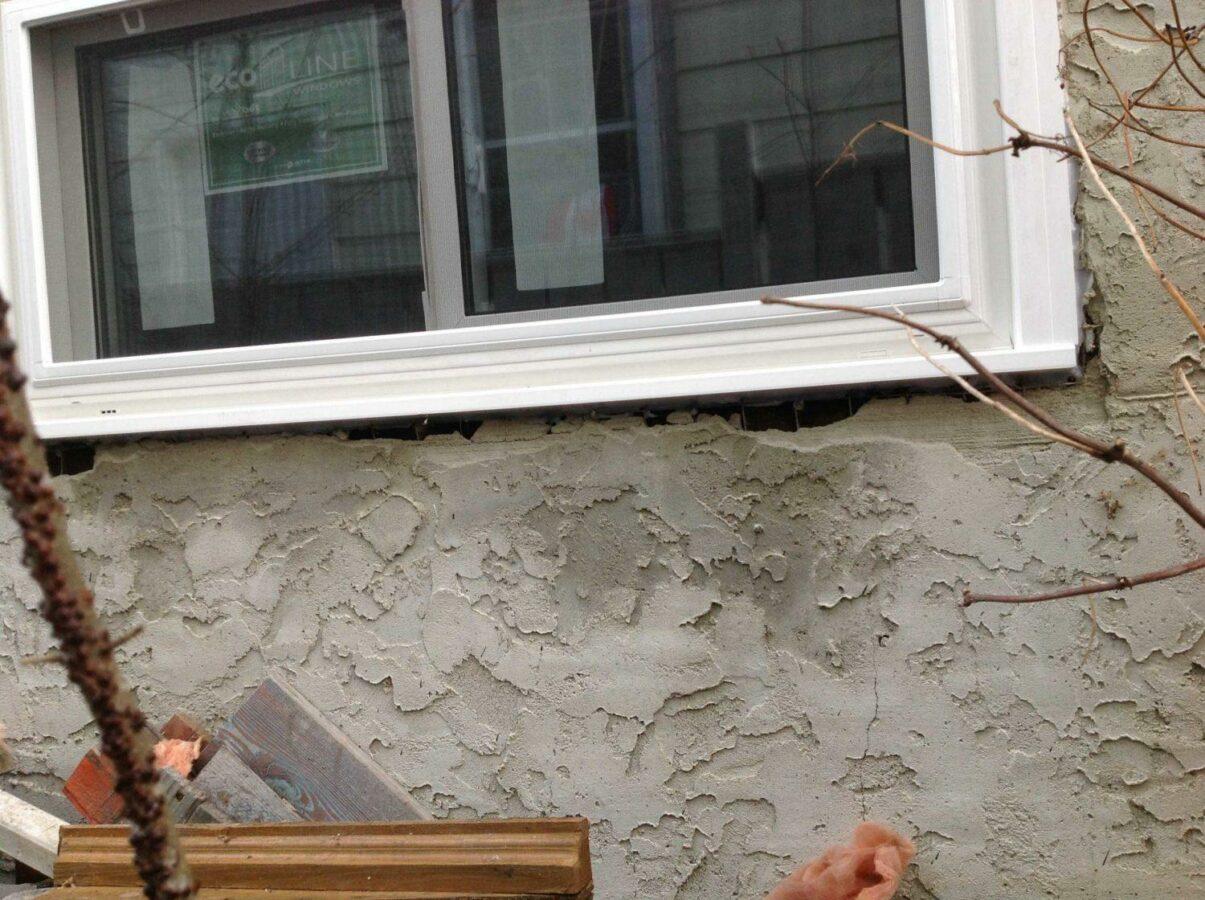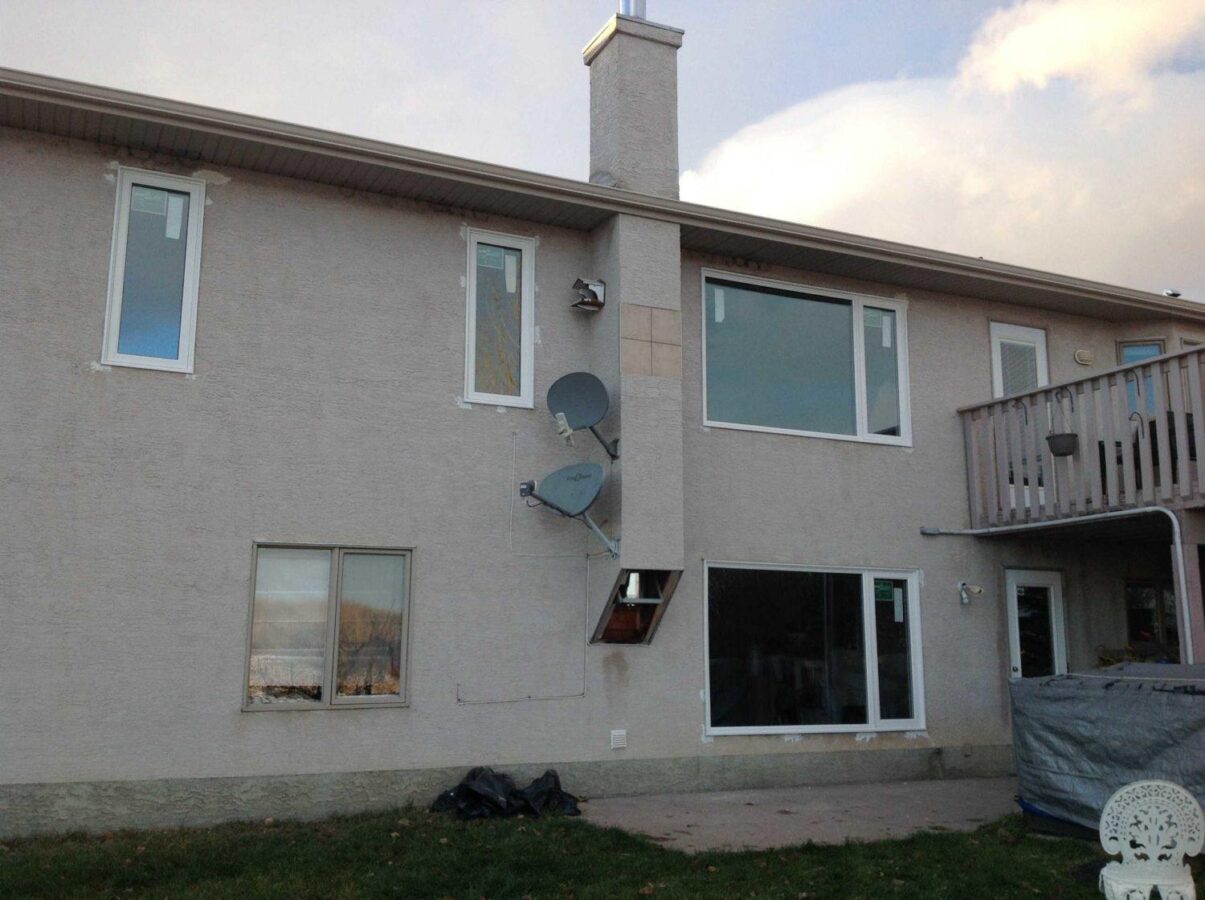Cracks? Chips? Holes?
These stucco problems are quite common when replacing old units with new vinyl windows. But the bigger part of the problem might be the condition of the stucco itself and how it was applied in the first place.

Stucco also has to be applied directly onto the black construction paper. Often in older homes, however, there is already a patchwork of stucco applied on top of the existing finish, making it even more susceptible to breakage. If the stucco had been applied evenly and in a relatively thick layer it won’t crumble or break away as easily during the window replacement.
Preserving stucco also greatly depends on the kind of old windows you already have installed. In stucco homes with aluminum windows, it is often necessary to cut away the original flange to preserve the stucco.
With wood windows, there is no nail fin, and the stucco usually ends at the edge of the existing brickmould. With this kind of window replacement, it is easier to preserve the existing finish with less damage. However, as the old brickmoulds get taken out, the stucco may come off along with them in certain places leaving an uneven line at the edge.
“I’ve had new windows installed, and now the stucco is damaged. What can be done?”
Unfortunately, there is no one-fit-all solution for dealing with damaged or crumbled stucco. Again this has to do with how well the stucco was put on originally, how thick it is, and how old it is.
If the overall look of the stucco is preserved and the chipping is minimal around the edges, it is best to extend the caulking around the window to fill the little cracks or chips. While this may make the caulking look a bit uneven and not uniform, it is the best way to keep the edge of the window sealed and prevent any moisture damage from the areas where the finishing was chipped away.
Another common solution is patching the stucco up. This can help fill up the space where the finish is missing, but a big problem is matching the color and the texture of the existing finish. In the end, you may end up with what looks like discolored stains around the window.
If the stucco had initially been put on properly and in a nice thick layer, it is sometimes possible to salvage the chunks that fell off and put them back in place. This works well if the pieces that fell off remain intact.
In short, there is no ideal solution for repairing stucco that gets broken or chipped during the installation. Most window installers will tell you that the right way to do it is to replace all the windows and then re-do the stucco on the whole home. This, however, is a less than perfect solution as most homeowners simply don’t have the budget for this much renovation work.
Although most companies will overtly state that they are not responsible for any stucco damage, good window installers generally take all precautions around such a fragile and unstable material. They will also do their best to not just leave the chips and cracks as is, but patch, fill, or seal them up as best as they could. In the end, you may still end up with a finish that isn’t as good as it was before. If you don’t want to or can’t re-do the stucco after the completion of your window replacement it is absolutely crucial for you to find installers that will take as much care as possible when removing and putting in windows.
Learn more about replacement windows:
Find out how much new windows should cost
See what energy-efficient features go into modern windows
Read more about our installation methods



